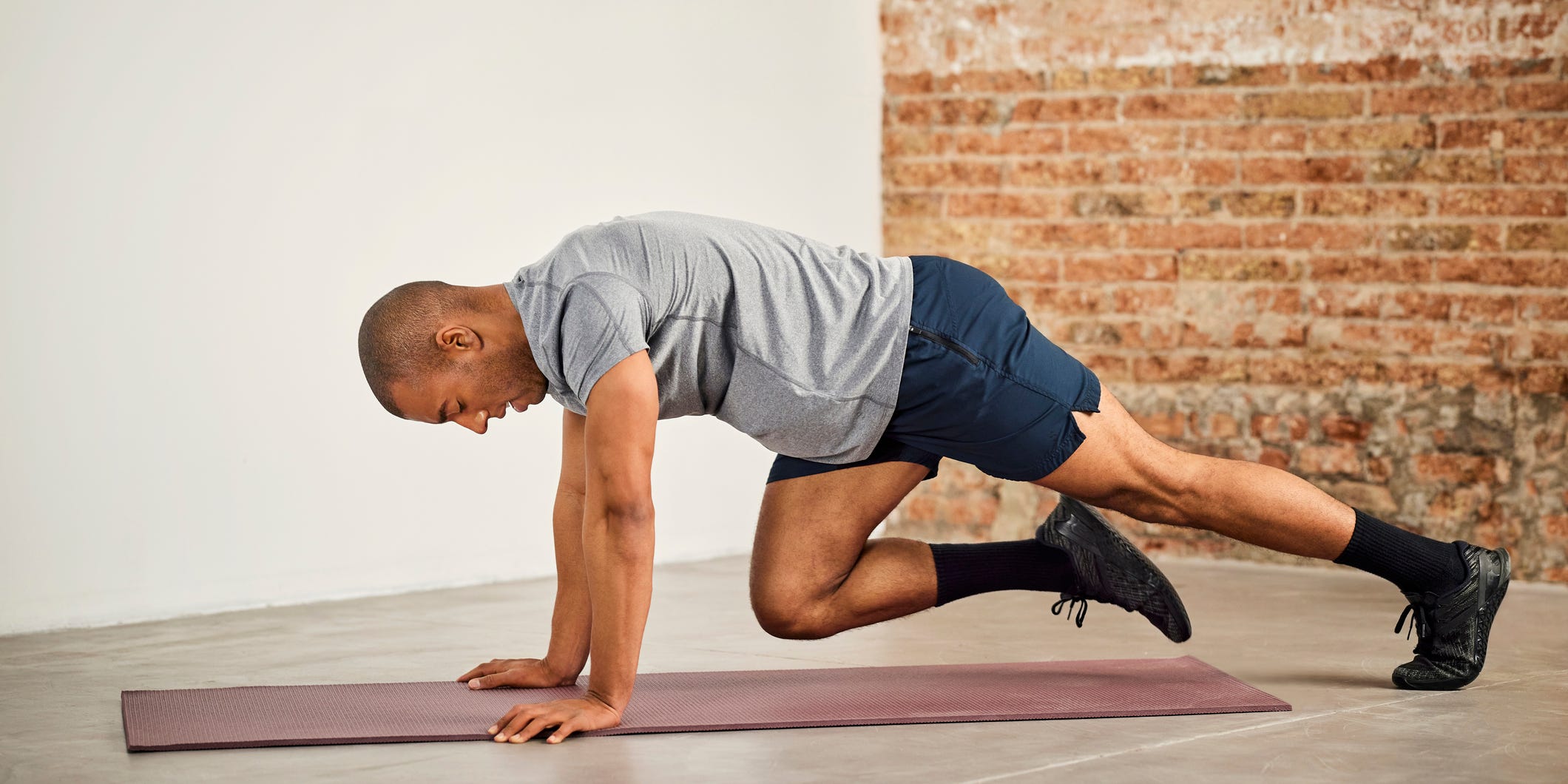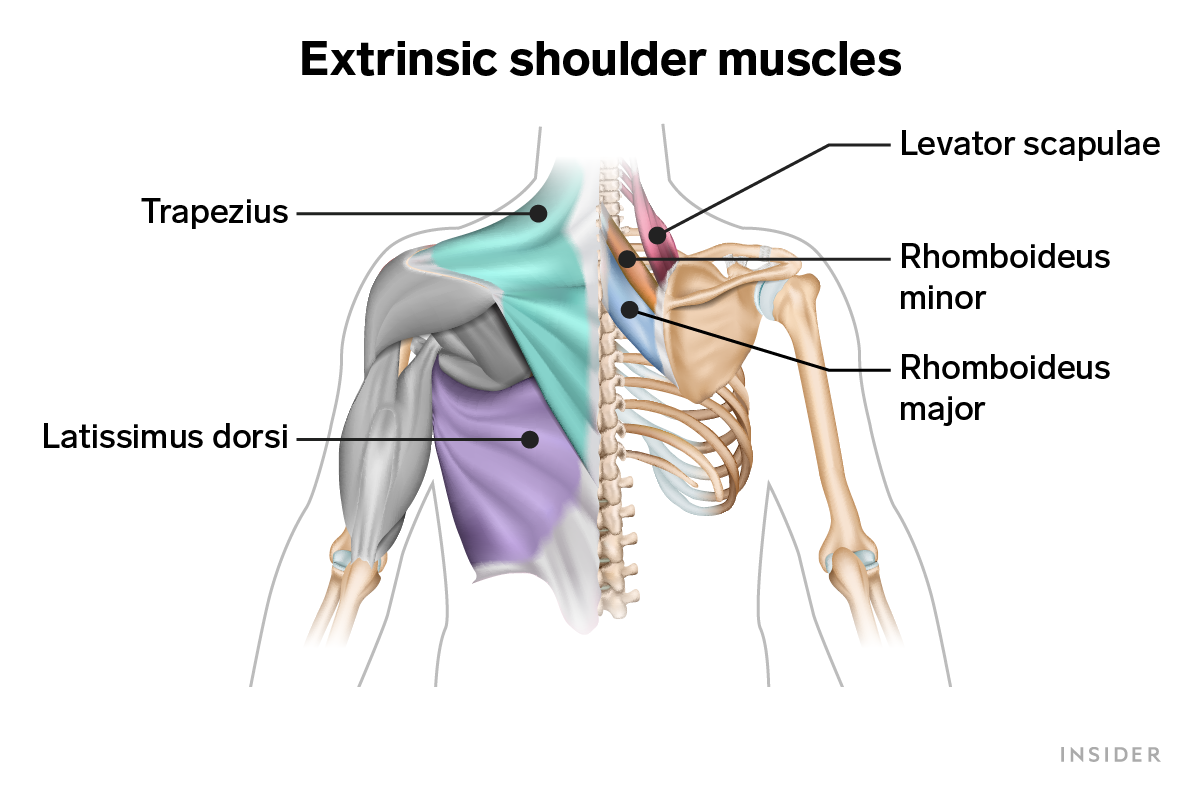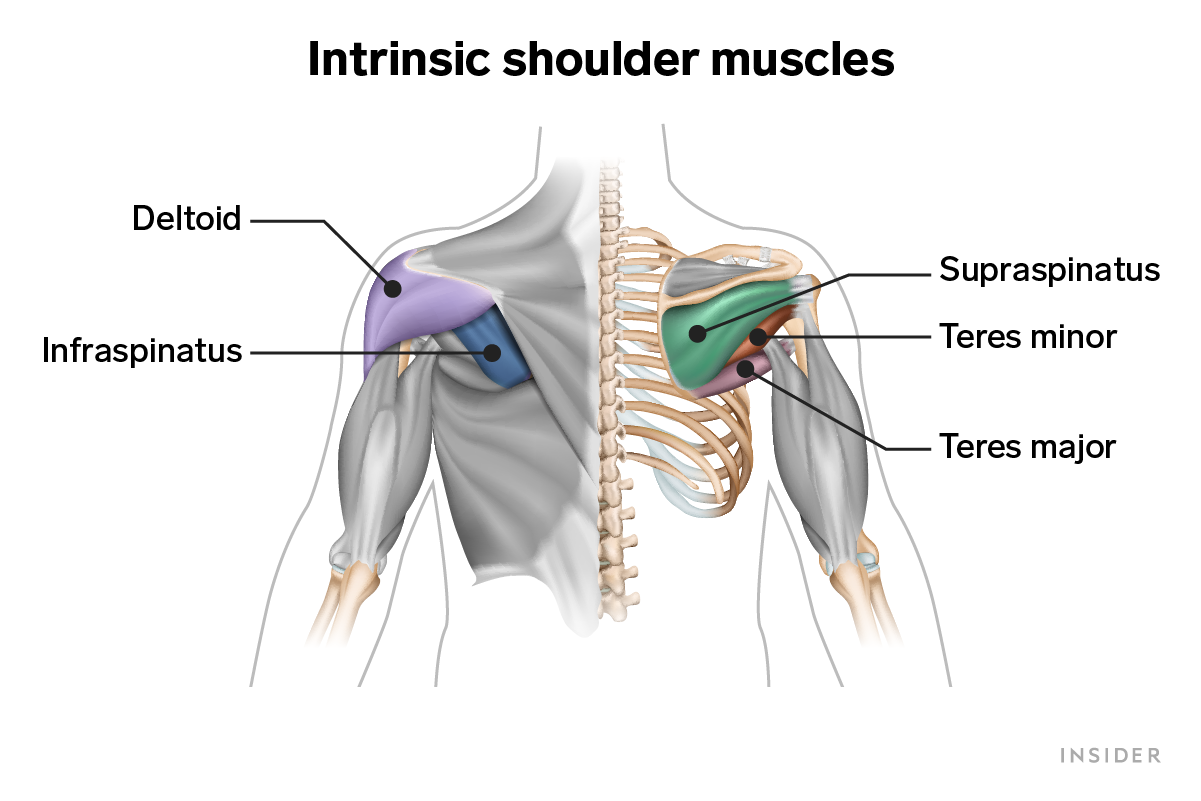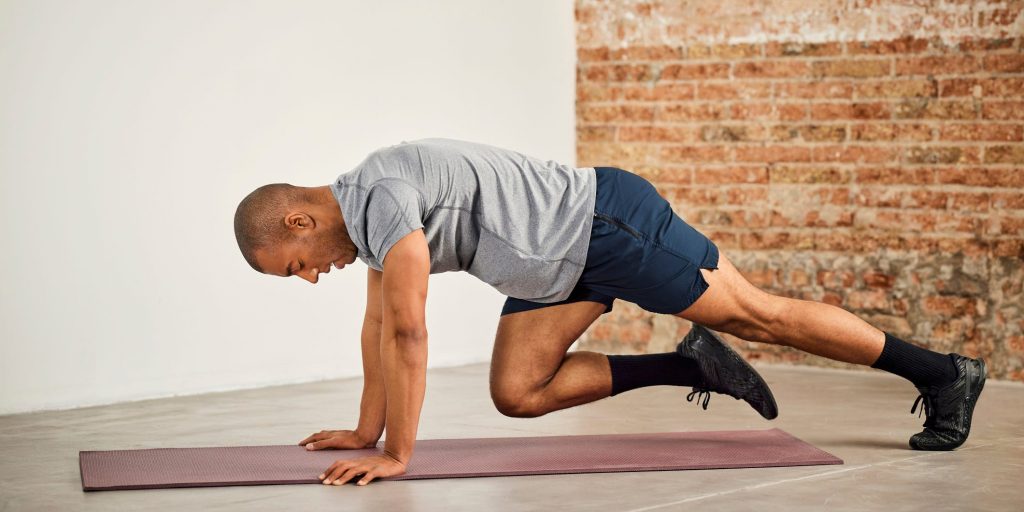
- Shoulder exercises like windmills and bench press target the right muscles for building strength.
- Some equipment-free shoulder exercises include mountain climbers and push-ups.
- You use your shoulders all the time, so keeping them strong is key for maintaining daily mobility.
- Visit Insider's Health Reference library for more advice.
Strong shoulders are important because you use them for all kinds of daily activities, from taking something down from a shelf to picking up a child, says Morgan Dowd, an NASM-certified personal trainer and Onyx coach.
Shoulder muscles not only help you move your arms up, down, forward, and backward, but they also protect the shoulder joint and hold those bones in place. That's why it's important to keep them strong, stable, and mobile, Dowd says. She adds that strong shoulder muscles can also help with posture and reduce the risk of back pain.
Here we discuss the key muscles in your shoulders and offer 10 exercises to keep them strong. You may not bulk up immediately, but remember that even small gains like being able to go up in weight and reps are a sign you're getting stronger. Dowd recommends doing these exercises between two and four times per week.
Key shoulder muscles

The shoulder muscles include both extrinsic and intrinsic muscles. The extrinsic muscles extend from the torso to the shoulder bones. They include:
- The trapezius (or traps) is a large triangular muscle at the back of the shoulder that helps you lift and lower your shoulder.
- The rhomboids stretch from the top of the spine to the scapula, and they help you lift your shoulder blade.

The intrinsic shoulder muscles extend from the shoulder blade (scapula) or the collarbone to the upper arm bone (humerus). Four of these muscles form the rotator cuff, which allows you to rotate your humerus:
- The subscapularis goes from the middle of the scapula to the bottom of the ball of the humerus.
- The supraspinatus extends from the top of the scapula to the top of the humerus.
- The infraspinatus connects from the bottom of the scapula to the humerus.
- The teres minor goes from the side of the scapula to the humerus.
Another intrinsic muscle is the deltoid, which is on the outside of the shoulder and helps you move your arm forward, backward, and to the side.
1. Push-ups
Equipment: none
How to do it:
- Start on the floor on all fours, with your hands directly under your shoulders.
- Walk your feet back to a plank position, so that your shoulders, back, and ankles are aligned in a straight line.
- Create tension through your hands, squeeze your glutes, and engage your core.
- Slowly lower your chest down to the ground as your elbows come back at a 45-degree angle from the shoulder.
- Keep a tight plank position as you push the ground away and return to the starting position.
Reps: 8-12
Tempo: 1111
2. Bent-over row
Equipment: barbell or dumbbells
How to do it:
- With the barbell resting on the floor, stand close to it, with feet hip-width apart so that your feet are halfway under the bar.
- Tighten your core and keep a slight bend in the knees as you hinge your hips to bend down and grab the bar.
- With an overhand grip on the barbell (or neutral grip with palms facing each other on the dumbbells), press your feet into the floor as you lift the bar (or dumbbells) to the height of your knees.
- Then use your shoulders to lift the bar to your chest.
- Slowly lower the bar to the ground and repeat.
Reps: 8-12
Tempo: 1111 (1 count to lift the bar to your chest, 1 count to hold it at the top, 1 count to lower the bar back to start position, 1 count before moving on to the next rep)
3. Scaption exercise
Equipment: none
How to do it:
- Lie flat on your stomach or prone on a bench.
- Lift your arms straight up to form an "I" shape.
- Squeeze your back muscles and glutes, then move your arms into a "Y" shape.
- While still squeezing your back muscles and glutes, move your arms into a "T" shape.
- Relax and repeat.
Reps: 8-12
Tempo: 1111 (One count to lift your arms into an "I" shape. One count to transition to a "Y" shape. One count to switch to a "T" shape. And finally one count to relax and start again with "I.")
4. Mountain climbers
Equipment: none
How to do it:
- Start on all fours, with your hands directly under your shoulders.
- Walk your feet out to a plank position, creating a straight line with your back that extends from your shoulders to ankles.
- Pull one knee into your chest and then extend back into a plank as you pull the other knee into the chest.
- Alternate back and forth as quickly and controlled as possible for the set amount of reps or time, making sure to keep your core engaged the entire time.
Reps: 10-20 reps, or 30-60 seconds
Tempo: fast (switching your feet as if you're running in place)
5. Windmill
Equipment: dumbbell or kettlebell
How to do it:
- Stand with your feet shoulder-width apart.
- Turn the left foot out to a 90-degree angle and turn the right foot to the left at a 45-degree angle.
- Reach your right arm up to the ceiling with the dumbbell in your hand.
- Keep the left arm hanging down by your side, with no dumbbell.
- While keeping your eyes on the dumbbell, slowly hinge the hips to the right as you reach your left hand down the left leg.
- Keep the right leg as straight as possible while putting a slight bend into the left knee.
- Engage the core as you slowly stand back up in the starting position.
- Repeat for the set number of reps before switching to the other side.
Reps: 3-10
Tempo: slow and controlled
6. Bench press
Equipment: dumbbells
How to do it:
- Start in a seated position on the bench, holding the dumbbells on your thighs.
- Slowly roll back to a lying position as you extend your arms, holding the dumbbells directly over your chest, with your palms facing your feet.
- Slowly lower the dumbbells to the outside of your mid-chest by bending the elbows and pointing them at a 45-degree angle from the shoulders.
- Press the dumbbells back up.
Reps: 6-12
Tempo: 2011 (2 counts lowering the dumbbells to your chest, no time at the bottom of the exercise, 1 count lifting them up, and 1 count with your arms straight before you move on to the next one)
7. Overhead press
Equipment: dumbbells
How to do it:
- Start in a standing position with your feet shoulder-width apart and a slight bend in the knees.
- Hold the dumbbells up to the outside of your shoulders with your palms facing out.
- While keeping your core engaged, press the dumbbells up overhead until they touch at the top.
- Lower the dumbbells back down with control.
- Avoid arching your back by keeping your core tight and engaged.
Reps: 6-12
Tempo: 1111 (1 count to lift, 1 to hold at the top, 1 to lower, and 1 to hold at the bottom)
8. Arnold press
Equipment: dumbbells
How to do it:
- Start seated or standing with your feet shoulder-width apart.
- In either position, ensure your spine is straight and your core is engaged.
- Hold the dumbbells up just below your chin, with your palms facing you.
- As you press up, rotate your palms out, so they are facing away from you at the top of the movement.
- Lower the dumbbells back down.
Reps: 8-12
Tempo: 1111 (1 count to lift, 1 to hold at the top, 1 to lower, and 1 to hold at the bottom)
9. Lateral raise
Equipment: dumbbells or bands
How to do it:
- Start standing with your feet shoulder-width apart and dumbbells down by your sides.
- With your palms facing the ground, lift the dumbbells out to the side and up to shoulder height.
- Lower your arms back down and repeat.
Reps: 8-15
Tempo: 1011 (1 count to lift, no time at the top of the movement, 1 to lower, and 1 to hold at the bottom)
10. Reverse fly
Equipment: dumbbells
How to do it:
- Start standing with the dumbbells by your sides.
- With a slight bend in the knees, hinge forward at the hips, bending over so your torso makes about a 110-degree angle with your legs. Make sure your back is straight, core engaged, and legs slightly bent. The dumbbells should hang directly below your shoulders, with your palms facing one another.
- Lift the dumbbells by opening up the arms with a slight bend in the elbows and squeezing the shoulder blades together.
- Return to the hinged position.
Reps: 8-15
Tempo: 1011 (1 count to lift, no time at the top of the lift, 1 count to lower, and 1 count to hold with your arms hanging straight)
Insider's takeaway
For someone like a baseball pitcher, the need for shoulder strength and mobility is obvious. But even if you don't play sports, shoulder strength is still important.
"It's one of those things, kind of like your back, where you don't realize how important it is until you can't use it or it hurts to wash your hair or little things like that," Dowd says.
Combined, the exercises described here can help strengthen your shoulder muscles as well as your core and whole upper body, Dowd says.
"I'm a big believer that we want our whole body to function together . . . making sure you get the full-body experience when starting any type of workout routine, but specifically shoulders, because it is such a sensitive area."
